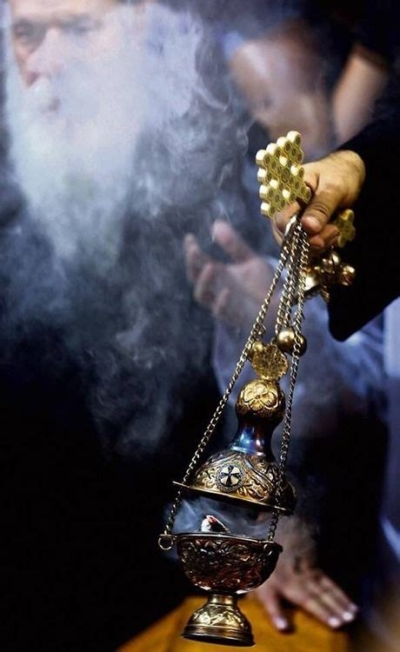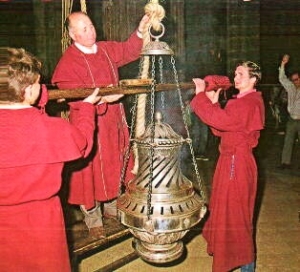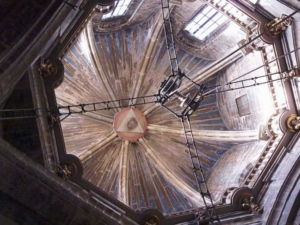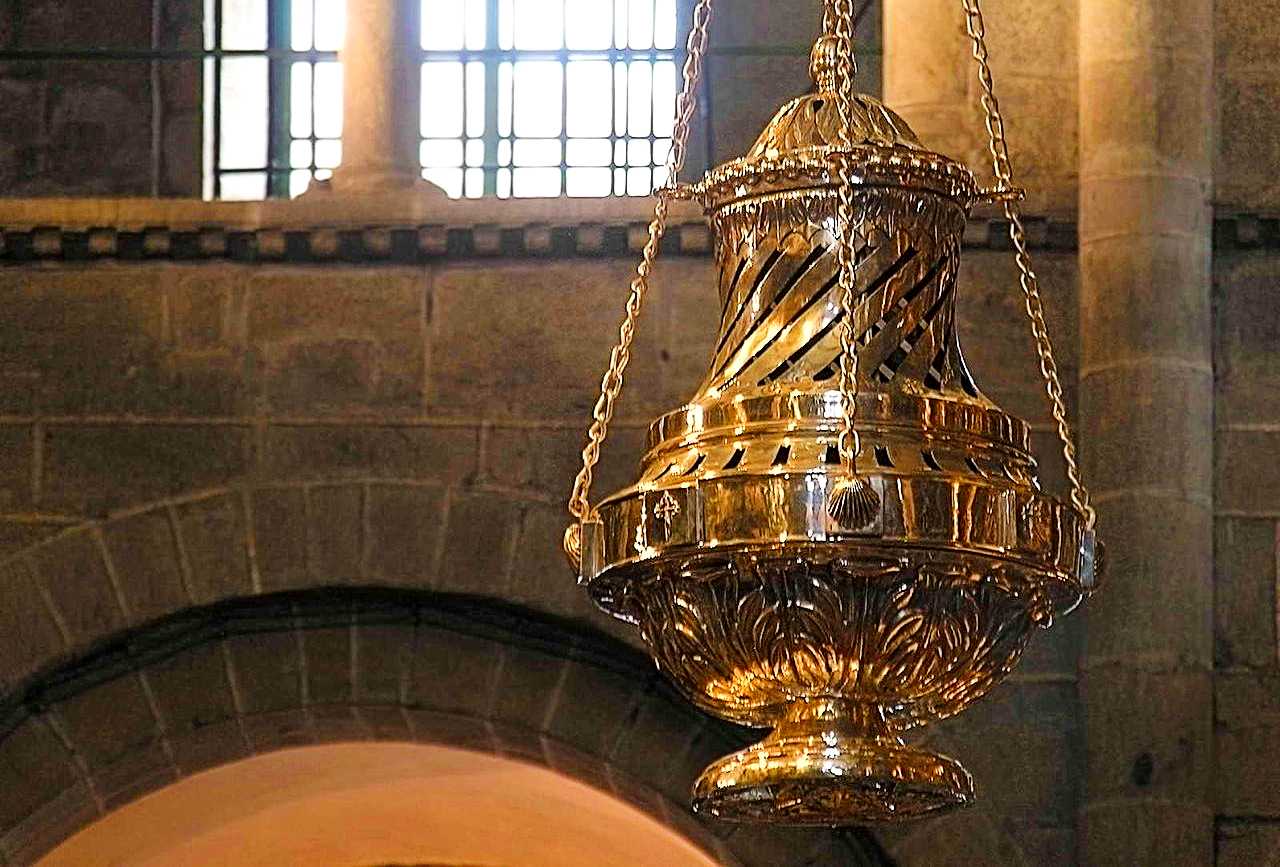It’s called the Botafumeiro, literally “the smoke expeller” in the local dialect of the people of Galicia in Northwestern Spain. It’s been a feature of the Cathedral of Santiago de Compostela for nearly five hundred years and has given glory to God in countless pendulum swings and clouds of incense since then.
To dispense with the title question right away: the Botafumeiro is actually the second largest thurible in the world after one that is more than twice its size in Germany!
However, the Botafumeiro is undeniably the world’s most famous thurible due to its role at one of the preeminent pilgrimage sites of Europe: namely, the cathedral that stands at the end-point of the famous Camino de Santiago (the Way of St. James). Pilgrims have walked that sacred road for centuries to get to the tomb of the Great Apostle James, the cousin of the Lord.
There is much to say about the ancient pilgrim way and its many traditions, but our focus here will be simpler. We want to look at heavenly beauty through a single window: the liturgical vessel whose sole purpose is to fill worshipers with divine sweetness.
What is a Thurible?
Simply put, a thurible is a vessel for incense. The unusual name comes through Latin and French but has its roots in the ancient Greek word for “incense” (θύος = thuos).
There are as many vessels for incense as there are types of incense – both secular and religious – but our chief concern here is with the type of vessel that is used in the Catholic (and Orthodox) liturgies.
A liturgical thurible takes the basic form of a bronze receptacle crafted in two pieces which are connected by a chain or several chains held by the hand of the thurifer (literally, the “incense bearer” – the person who incenses).
The lower receptacle holds the charcoal for burning the incense while the upper receptacle is vented by decorative slits or holes so that when it is closed, the smoke can escape from it to fill the sacred space.
The Eastern churches often put bells on the chains to provide a tinkling sound when the thurible is swung.
To prepare it for use, the priest raises the top part of the receptacle and scoops grains of incense onto the burning charcoals below. He then lowers the top to assure that no sparks or bits of burning charcoal escape while he is swinging the thurible!
The priest uses the thurible to incense sacred things, both for worship (when they are of divine nature such as the Eucharist or Scripture) or as a way of venerating the people and things in the liturgy (altar, icons and statues, liturgical ministers, congregation, etc.)
The clouds of sweet-smelling smoke envelop these things and people encompassing them in a kind of unified prayer so that their prayer “rises up like incense” (Psalm 141:2) to the Lord.
The Magnificent Botafumeiro

Try this imaginative exercise: take your little parish thurible that your pastor uses on feast days, multiply it by a factor of ten, and you have the size of the Botafumeiro. In Latin they call this a thuribulum magnum, which shouldn’t need translation.
Before we see the grand censer in action in the videos below, let’s just list some of its dimensions and feats:
- It stands 5 ft. 3 in. tall!
- Its weight is 110 lbs empty and double that when it is filled with coals and incense;
- The priests use a small shovel to load it with incense;
- The speed of the Botafumeiro’s swinging can reach up to 40 miles per hour; and
- Its maximum arc spans the entire transept (the “arms” of the cross-shaped church) reaching up to 213 ft. from one end to the other.
We’re not quite done! Here are a few more quick facts about this amazing holy vessel:
- It’s been in continuous use since the original was crafted in 1554;

- Napoleon stole it in the early 1800s but it was later returned and put back into service;
- The current Botafumeiro was created in 1851 and is made entirely of sliver-plated brass;
- It is displayed and used at pilgrim Masses every Friday night at the cathedral and on ten other occasions during the year: major feasts and commemorations related to St. James;
- It is attached to a thick rope which hangs from a pulley bolted to a strong bracket 65 ft. above the sanctuary at the base of the dome; and
- Eight strong, trained men swing it by a series of intricate rope pulls that send this huge burning object sailing through the air for all to marvel at and creating luminous clouds of sweet smelling incense for the greater glory of God.
See it in action now with these two videos. The first is a short, exciting documentary on the vessel, and the second shows it in use during a liturgy.
Botafumeiro 1: (duration, 2:16)
Botafumeiro 2: (duration, 4:00)
As you can see, there are many ways to give glory to God, and our Catholic tradition has a unique capacity to bring out the most exquisite means imaginable for increasing worship and drawing souls into prayer. The Botafumeiro is certainly one of most unique and interesting!

Soul Work
The human sense of smell provides us an early warning of toxic danger and decay, but it also gives us deep pleasure through the myriad beautiful scents and aromas that surround us. Smell is a direct pathway to many of the beautiful things of this world and a training ground for developing spiritual sensitivity.
You don’t have to seek out exotic aromatic experiences, but make sure to use your olfactory sense today to identify a beautiful scent (a flower, a glass of wine, a towel just out of the dryer, or the freshness of a newly-washed baby!)
Whatever scent it might be, drink it in deeply, for just a brief second. Focus your mind on what you are smelling and fix that scent deeply in your consciousness with gratitude for its beauty.
Smell and taste are connected physically, in the oral and sinus cavities of the head, and also in the heart: what we smell, we can “savor” (taste) in a certain way. That savoring, in turn, opens our heart to a great desire for the delights of heaven that never end.
Now you know what the psalmist meant when he wrote: “Taste and see the goodness of the Lord” (Psalm 34:8)




Leave A Comment